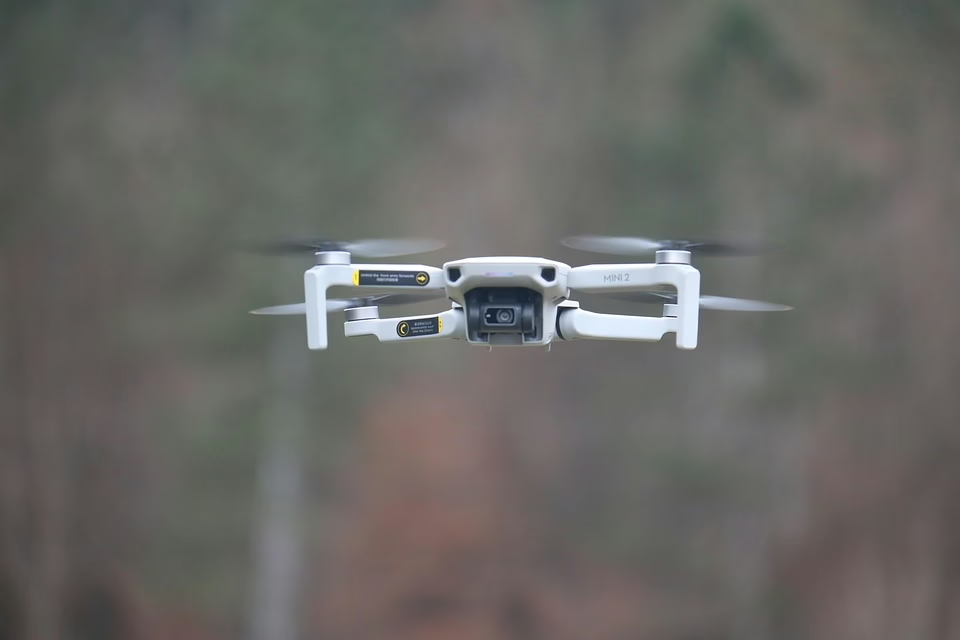Drones Decoded: How Camera Quality Influences Price
Drones have revolutionized various industries, including photography, agriculture, surveying, and even emergency services. The diverse applications of drones have led to a growing market, with an increasing number of manufacturers and models. Central to the value and functionality of these drones is often their camera quality. This article delves into the intricate relationship between camera quality and price in the drone market, examining how advancements in technology, consumer expectations, and competitive dynamics influence this relationship.
Introduction to Drones and Their Applications
Drones, or unmanned aerial vehicles (UAVs), are aircraft operated without a human pilot onboard. They have become ubiquitous in today’s technological landscape, serving a plethora of purposes from recreational use to professional applications. The growing interest in drone technology has led to rapid advancements in their design, including improvements in camera systems.
Applications of Drones
-
Photography and Videography: Drones equipped with high-quality cameras enable professional and amateur photographers alike to capture stunning aerial shots. Their ability to hover at specific heights and angles provides a unique perspective that traditional photography cannot achieve.
-
Agriculture: Farmers utilize drones to monitor crop health, assess soil conditions, and optimize irrigation systems. High-resolution cameras and specialized sensors can provide detailed insights into agricultural conditions.
-
Surveying and Mapping: Drones are increasingly used in surveying, providing detailed topographical maps and 3D models. The accuracy and resolution of the camera significantly affect the quality of the data collected.
-
Inspection Services: Drones serve vital roles in inspecting infrastructure, from bridges to power lines. High-quality cameras enable inspectors to capture fine details, ensuring that structures are safe and well-maintained.
-
Emergency Services: In disaster response, drones equipped with high-quality cameras can assist in search and rescue operations, assess damage, and provide real-time data to emergency responders.
Understanding Camera Quality in Drones
The camera quality in drones is determined by several factors, including sensor size, lens quality, resolution, and stabilization systems. Each of these elements contributes to the overall performance of the drone’s imaging capabilities.
Key Factors Influencing Camera Quality
-
Sensor Size: Larger sensors typically capture more light, resulting in better image quality, particularly in low-light conditions. As a result, drones with larger sensors usually command higher prices.
-
Resolution: Measured in megapixels (MP), resolution determines how much detail can be captured in an image. Higher resolution is essential for professional applications where detail is paramount.
-
Lens Quality: The type and quality of the lens can greatly impact image clarity and distortion levels. Higher-quality lenses can reduce aberrations and enhance overall image fidelity.
-
Lens Aperture: A lens with a larger aperture allows more light to enter the camera, improving low-light performance and enabling better depth of field effects.
-
Stabilization Technology: High-quality drones often feature advanced stabilization systems such as gimbals. These systems help to minimize image blurriness caused by drone movement, ensuring smoother footage.
-
Frame Rate: For videography, frame rate plays a crucial role. Higher frame rates enable smoother video playback, which is a key requirement for professional video production.
The Impact of Camera Quality on Pricing
The relationship between camera quality and pricing is both direct and nuanced. While higher quality often leads to higher prices, several other factors intertwine to influence this trend.
Price Segmentation in the Drone Market
The drone market can be broadly segmented into three categories: recreational, prosumer, and professional drones. Each segment has different expectations regarding camera quality and price points.
Recreational Drones
Recreational drones are typically the most affordable, designed for casual users who prioritize ease of use over advanced features. These drones usually come with basic cameras, often lacking in high-resolution sensors and stabilization technologies.
- Price Range: Typically ranges between $50 to $500.
- Camera Specs: Often feature low-resolution cameras (below 2 MP) and basic stabilization.
Prosumer Drones
Prosumer drones bridge the gap between hobbyists and professionals. This category often attracts users seeking more advanced features without the hefty price tag of fully professional models.
- Price Range: Generally falls between $500 to $2,500.
- Camera Specs: These drones often come with high-resolution cameras (12 MP to 20 MP), advanced stabilization, and features like 4K video recording.
Professional Drones
Professional drones are tailored for commercial use, often equipped with the highest quality cameras and advanced telemetry systems. These drones are used in specialized applications requiring superior image quality.
- Price Range: Typically start from $2,500 and can exceed $15,000.
- Camera Specs: High-resolution sensors (20 MP and above), advanced lenses, gimbals, and extra features like thermal imaging.
The Value Proposition of High-Quality Cameras
The inclusion of high-quality cameras in drones results in a value proposition that can justify a higher price. This is particularly relevant in sectors where image quality can lead directly to better outcomes.
-
Professional Photography: For photographers, the investment in a high-quality drone can lead to significant returns in terms of high-quality deliverables and reputation enhancement.
-
Agricultural Monitoring: Farmers using drones with advanced imaging capabilities can increase crop yields through better management practices, thereby justifying the initial investment.
-
Surveying and Mapping: High-resolution imagery can result in more accurate maps and analyses, providing additional value in professional sectors like real estate and land management.
-
Safety and Compliance: In industries requiring inspections, high-quality cameras are crucial for identifying potential safety issues. The cost of a high-quality drone can be seen as a preventive measure against accidents and legal issues.
Technological Advancements Driving Camera Quality
The continuous advancement in technology significantly influences camera quality in drones. Innovations in both drone and camera technology contribute to improved performance and capabilities.
Sensor Technology
-
CMOS Sensors: Modern drones increasingly utilize CMOS sensors due to their superior performance in low-light conditions and better energy efficiency. These advancements have led to higher image quality at lower costs.
-
Full-Frame Sensors: Although rare, some high-end drones now feature full-frame sensors, taking image quality to a new level. Drones with these sensors typically command higher prices due to the enhanced image resolution and dynamic range.
Image Stabilization Systems
Advancements in stabilization technology have transformed the way drones capture images and videos. Gimbals and electronic stabilization systems work to counteract drone movement, leading to smoother, high-quality footage.
- Three-Axis Gimbals: These systems allow the camera to remain level, even if the drone experiences turbulence or changes in orientation, ensuring professional-quality footage is captured.
Lens Innovations
-
Adjustable Apertures: Some modern drone cameras incorporate adjustable apertures, allowing users to control how much light enters the lens. This feature enhances versatility in various shooting conditions.
-
Zoom Lenses: Drones equipped with optical zoom capabilities offer unprecedented flexibility, enabling users to capture distant subjects without sacrificing image quality.
Consumer Expectations and Market Dynamics
Consumer expectations play a crucial role in shaping the drone market. As awareness of drone capabilities grows, users increasingly demand higher quality cameras and features.
Rise of Drone Enthusiasts
The rise of drone enthusiasts has led to a growing market for high-quality drones. Many users are willing to spend significantly more for advanced features, including superior camera capabilities.
Professional Demand
As industries increasingly recognize the value of drone technology, demand for high-quality drones has escalated. Professionals in photography, EMS, agriculture, and construction are particularly keen on drones that offer high-resolution imaging and robust performance.
Competitive Dynamics
The drone market is highly competitive, with numerous manufacturers striving to differentiate their products. This competition often leads to innovation, pushing the technological envelope and contributing to overall camera quality improvements.
Conclusion: The Symbiotic Relationship Between Camera Quality and Price
In summary, the relationship between camera quality and price in the drone market is complex yet essential for understanding consumer choice. As advancements in drone technology continue, manufacturers will likely push the boundaries of what is possible with drone cameras, leading to innovative features that can impact both pricing and performance.
With evolving consumer expectations and the growing demand for professional drone applications, high-quality cameras will remain a significant factor influencing drone pricing. Whether for personal use or professional applications, understanding this relationship can help consumers make informed purchasing decisions and maximize their investment in drone technology.
References
- Modern Footnote: Consumer Insights into Drone Photography
- Modern Footnote: The Role of Technology in Agricultural Drone Use
- Modern Footnote: Future Trends in Drone Camera Technology
- Modern Footnote: Surveying and Mapping Innovations with Drones
- Modern Footnote: The Economic Impact of High-Quality Drone Cameras
- Modern Footnote: Advances in UAV Technology and Applications


























Add Comment